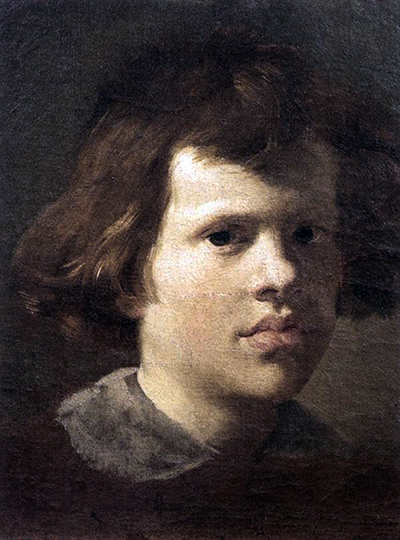Born, bred and inspired by Italian culture, Gian Lorenzo Bernini’s art and painting are considered the most recognisable in the 17th Century. Being an architect and a painter shaped him into perfecting his art.
He was the forefront in the assumption of the Baroque style of sculpture, and combining it with painting made him a unique artist. This made his fame in art compared to Shakespearian drama. Bernini’s idea of art was based on reality; a compilation of dynamism, energy and definitions. He was inspired by his father, Pietro Bernini, and was mentored under the Papal discipleship. This gave him the model, equipment and pupillage that grew, developed and perfected his painting. This painting was done in 1638 just before the Portrait of Pope Urban VIII. He did it on canvas using oil. The picture was inspired by young vibrancy and innocence, mostly associated with childhood. Owing to Bernini’s young exposure to painting and drawing, this painting would have played the role of a young spirit ready to take the world. The background of the picture is dark which emphasized the painting. The free-flowing hair painted a picture of smoothness and free spirit while the curious eyes were a sign of the urge to discover and understand the world.
Most of his works were done under the guidance of Cardinal Scipione Borghese who displayed his works within the church’s network. The painter had an affinity for painting and sculpturing portraits, thanks to his surrounding in Rome. The Portrait of a Boy can be found at the Borghese Gallery in Rome, Italy. The piece has also been replicated and is sold in Art Shops all around the world in different dimensions. This style of painting has a history with religion, specifically The Catholic. It flourished in the 17th century to mid-18th century. Its association tries to shape the desire of the Catholic Church to re-invent itself after the emergence of Protestant churches. The art was initiated by Annibale Carracci and Caravaggio from Italy. It was Bernini who merged architecture and painting, although Alessandro Algardi had commissioned sculpture Baroque. The style was also experienced in France, Netherlands, Russia, Germany, Austria, Hungary and part of Spain.
The method involved heavy brush stroke for texture and contrast which was good for dark and light paints; shadows and brightness. Some of the arts done using this style were Rinaldo and Armina by Anthony Van Dyk, St. George and the Dragon by Paul Ruben, Deposition by Michelangelo Merisi da Caravaggio and Sacrifice of Isaac by Rembrandt Harmenszoon van Rijn. Gian Lorenzo Bernini lived through the Early Baroque stage (1600 to 1625) and the High Baroque stage (1625 to 1675). However, he influenced other painters like Carlo Pellegrini, Giovanni Battista Gauli, Guillaume Courtois, Ludovico Gimignani and Guido Abbatini. This team continued into the Late Baroque (1675 to 1725). The most notable of his disciples was Giovanni Battista Gauli who was rewarded for being an astute painter by the Jesuits.




